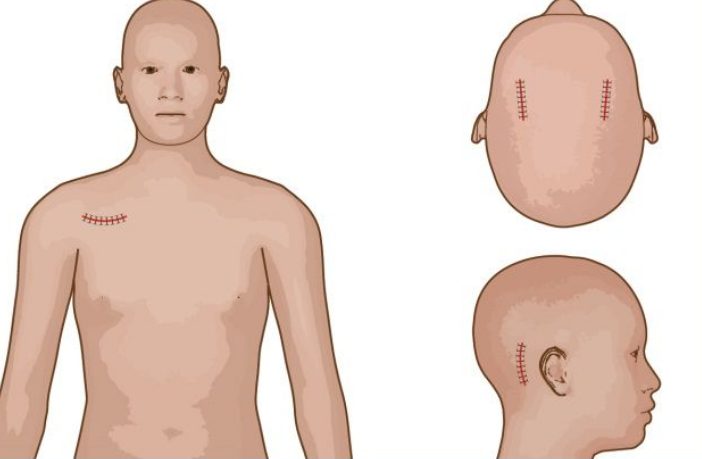Lung cancer remains one of the most common and deadliest cancers worldwide. Early detection plays a crucial role in improving survival rates, but diagnosing lung cancer can be challenging due to the complexity of the lungs and surrounding tissues. While CT scans are the standard imaging tool for lung cancer screening, many patients wonder: Can MRI detect lung cancer effectively?
The answer is both yes and no—MRI can detect lung cancer in certain situations, but it is not yet considered the primary imaging method. In this article, we’ll explore how MRI works for lung cancer detection, what the research says, and how it compares to other imaging methods.
How MRI Works
Magnetic Resonance Imaging (MRI) uses powerful magnets, radio waves, and computer technology to create detailed images of soft tissues inside the body. Unlike CT scans or X-rays, MRI does not use radiation, which makes it safer for repeated use.
In lung imaging, MRI is particularly good at showing soft tissue contrast, blood vessels, and abnormalities near the chest wall or mediastinum (the area between the lungs). However, because the lungs are mostly filled with air, MRI has traditionally been less effective at producing clear lung images compared to CT.
MRI and Lung Cancer: What the Research Shows
Over the past decade, researchers have made significant progress in adapting MRI for lung imaging. Studies suggest that while MRI is not yet the gold standard for lung cancer detection, it has promising applications:
- Tumor Detection – MRI can detect larger lung tumors, especially those near the chest wall or mediastinum. However, small nodules are often better detected with CT.
- Staging Cancer – MRI is highly effective at showing whether lung cancer has spread to the chest wall, spine, heart, or brain. This makes it particularly useful in staging.
- Brain and Bone Metastasis – MRI is superior to CT in detecting lung cancer that has spread to the brain or bones.
- Functional Imaging – Advanced MRI techniques, such as diffusion-weighted imaging (DWI) and perfusion MRI, provide information about tumor activity, aggressiveness, and blood flow.
- Radiation-Free Monitoring – MRI can be used to follow up on patients who need multiple scans without exposing them to repeated radiation.
MRI vs. CT Scan for Lung Cancer
| Feature | MRI | CT Scan |
|---|---|---|
| Radiation Exposure | None | Yes (low-dose in screening) |
| Soft Tissue Detail | Excellent | Good |
| Detection of Small Nodules | Limited | Excellent |
| Staging Capability | Strong for chest wall, mediastinum, brain, and spine | Strong for lungs and lymph nodes |
| Speed | Longer scan times (30–60 minutes) | Faster (5–10 minutes) |
| Availability | Less common for lung screening | Widely used and available |
Currently, low-dose CT (LDCT) is the recommended method for lung cancer screening in high-risk individuals, such as long-term smokers. MRI is considered complementary rather than a replacement.
When Doctors Might Recommend MRI for Lung Cancer
While CT scans remain the primary tool, MRI may be recommended in specific situations:
- Evaluating tumor invasion into the chest wall, diaphragm, or spine
- Staging mediastinal tumors (tumors located between the lungs)
- Checking for metastasis in the brain, bones, or liver
- Monitoring patients who cannot undergo repeated CT scans due to radiation concerns
- Patients allergic to iodine-based CT contrast agents (MRI uses gadolinium-based agents instead)
Advantages of MRI in Lung Cancer Care
- No radiation exposure
- Excellent for assessing soft tissue and tumor spread
- Better at detecting metastasis in the brain and spine
- Provides functional imaging insights (blood flow, tumor activity)
- Useful in planning surgery or radiation therapy
Limitations of MRI for Lung Cancer
- Less effective at detecting small lung nodules compared to CT
- Longer scan times, requiring patients to stay still
- Limited availability in some hospitals
- Higher cost compared to CT
- Not suitable for patients with pacemakers, metal implants, or severe claustrophobia
Future of MRI in Lung Cancer Detection
Recent research is focused on improving lung MRI through:
- Ultra-fast MRI sequences that reduce motion blur caused by breathing
- Diffusion-weighted imaging (DWI) to assess tumor aggressiveness
- Hybrid PET/MRI scans that combine functional and structural imaging for more accurate detection
- AI-assisted interpretation to improve sensitivity and reduce false positives
These advances may expand MRI’s role in lung cancer diagnosis and management.
Conclusion
So, can MRI detect lung cancer? Yes, but with limitations. MRI is not typically used as the first-line screening tool, as CT scans are better at spotting small nodules in the lungs. However, MRI shines in evaluating tumor spread, staging, and monitoring, especially in patients who need radiation-free imaging.
If your doctor recommends an MRI, it’s usually because they need a clearer view of how lung cancer is affecting tissues beyond the lungs, or to safely monitor your condition without additional radiation.
Also Read :
